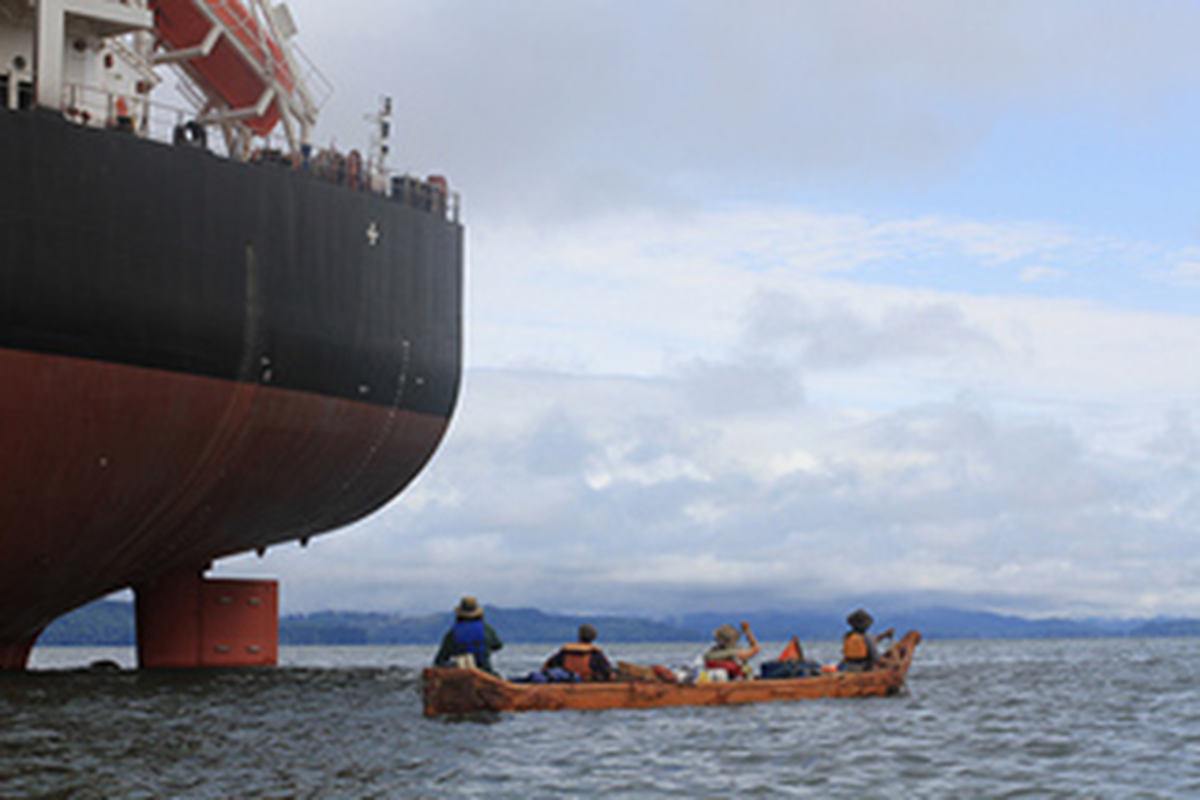Landers: Canoeists paddle way of Columbia salmon

Among the scientists and officials at the Lake Roosevelt Forum’s 2013 Conference this week were three young men with notably strong arms.
Agency and tribal representatives convened at the Davenport Hotel to outline a variety of complicated and high-price-tag issues facing the Columbia River – fish consumption rates, contamination, water management, invasive species and climate change, to name a few.
But none of the expert speakers had experienced the river as entirely or intimately as the three men who’d recently paddled the river on a pauper’s budget.
The official presentations were full of numbers and details.
The canoeists offered a simple vision of reintroducing salmon to the Columbia upstream from Grand Coulee Dam.
“We showed some of our slides and people stood and clapped,” said Adam Wicks-Arshack. “We got respect from the people who do the research and make the policies; for us it as an honor.”
The “ Sea to Source” expedition left Astoria, Ore., on Aug. 1 for a 1,243-mile upstream voyage in five hand-made dugout canoes. The expedition, boiled down to one boat, reached the source of the Columbia River at Canal Flats, British Columbia, on Oct. 28.
Along the way they were joined by helpers including a salmon fisherman they met when a rogue wave washed a canoe out of control and into his line.
“We started without enough funds to finish, but we picked up support all along the way,” he said. “We went a month and a half in one stretch without cooking because people were bringing us food.”
Their goal is to connect more people to the river and ultimately find a way to build a fish ladder at Grand Coulee.
The 1964 Treaty failed to consult with tribes, Wicks-Arshack said. “The Treaty contains only the two purposes of hydropower and flood control. Tribes and conservationists want a third purpose added to the Treaty: restoring the Columbia River to ecological health including bringing salmon home to waters blocked by dams.”
It’s sobering that the backbone of this expedition isn’t made up of Northwest adventurers or fishermen. Wicks-Arshack and John Zinser are long-time friends from New York City who met Xander Demetrios of Los Angeles when they were enrolled at Evergreen State College in Olympia.
They started as rafting guides before launching Voyages of Rediscovery, a canoe guiding and environmental education service, connecting with Columbia.
“I’m not a fisherman,” Wicks-Arshack said. “I came into this wondering why people would want to kill a salmon. I’ve learned fishing is integral to the culture.”
The five dugout canoes were carved at various schools over the past year. The Salmon Savior, a 21-foot ponderosa pine, was carved at the Wellpinit Middle and High School on the Spokane Reservation. The Crying Salmon, a 33-foot cedar canoe, was carved by the students of Inchelium School on the Colville Reservation.
Students were later invited to help the guides power the crafts upstream for a day or more. “One girl counted every stroke, going 2,000 in a row before taking a break,” Wicks-Arshack said.
“It was so cool to be in a canoe that so many kids had invested themselves in.”
The paddlers breezed through the first leg of the trip. Lashing their boats together and raising 20 foot masts to harness the Columbia Gorge winds, they sailed the first 325 miles upstream in two weeks.
During a break at Hood River, they were asked on the spot to give a presentation to a conference of climbing guides.
“It was an eye-opener that people were interested,” he said.
In the Hanford Reach they began linking eddies to paddle upstream in the free-flowing current.
The Wanapum Indians took them in at their tiny village below their namesake dam. Then they paddled a double-dam day, portaging past Wanapum and Priest Rapids.
With hearts as heavy as their canoes, they arrived after 545 miles at Chief Joseph Dam, the first dam on the Columbia without a fish ladder.
A few days later they were at Grand Coulee, which was the beginning of the end for upstream salmon.
Facing swifter water in Canada, they held up in Kettle Falls to build a lighter cedar-strip canoe similar to what fur trader David Thompson used to pioneer the river.
“We went from 1,000-pound dugouts to a 150-pound, 21-foot canoe we made from $3,000 worth of beautiful clear cedar boards donated by Columbia Cedar,” Wicks-Arshack said. “It would carry 2,000 pounds and still have a foot of freeboard.”
In the final weeks they were on the water by 5 a.m., making as much as 45 miles a day. “The notorious winds of Kinbasket Lake eased for our passage as though the river knew what our message was and wanted it to happen,” he said.
They lined their boat through braided channels that had perfect gravels for salmon spawning.
Overall, they gave presentations to more than 2,000 students who also followed the posts and videos on the expedition blog during their journey.
“When we started, the river was industrial and 10 miles wide,” he said. “As we neared the source, it was a creek.”
First Nations groups drummed and danced for them in Invermere. Snow fell on Oct. 26.
Two days later, they reached a wetland with springs bubbling into the source of the Columbia.
“Next year we’d like to do it again, build five more canoes and connect more kids to the fish and the river, this time in Canada,” he said. “Our next vision would be to connect the kids from the two countries. The story doesn’t end here.”
Contact Rich Landers at (509) 459-5508 or email richl@spokesman.com.